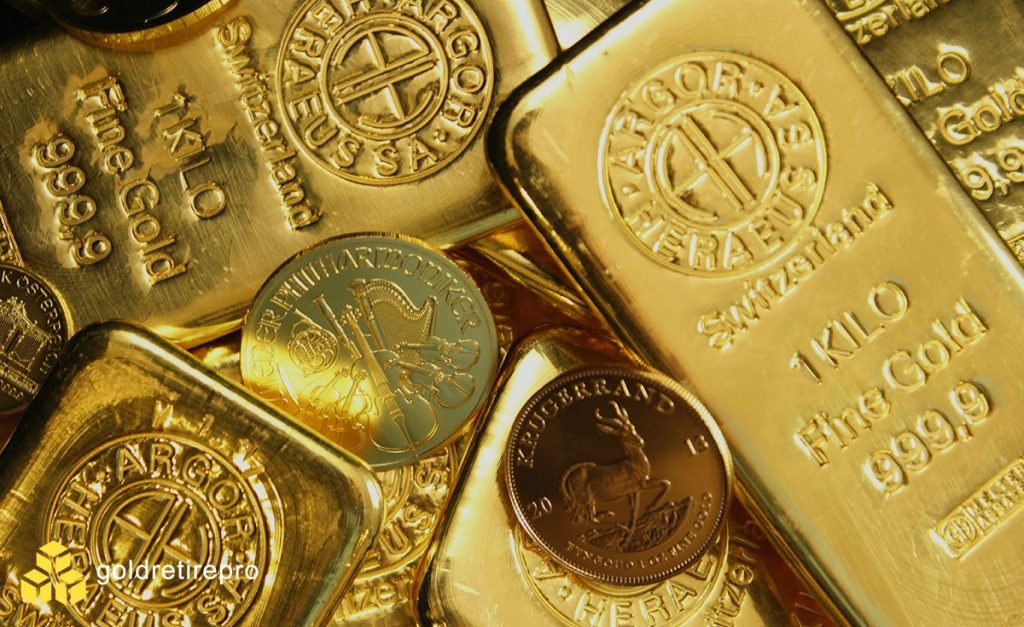Gold often moves independently from stocks and bonds, making it a valuable tool for diversifying your retirement portfolio. However, like any investment, gold is still influenced by broader economic forces and market conditions.
Understanding key trends and indicators can help you evaluate price movements and make more informed decisions as a gold IRA investor.
In this article, we’ll look at important market trends and economic indicators to monitor for your precious metals IRA. You’ll gain insight into factors like gold supply and demand, geopolitical risks, inflation measures, and more.
Gold Price Trends Reflect Macro Conditions
While gold has intrinsic value, its price fluctuates daily based on global economic developments. Short-term movements are often driven by news events, market speculation, and trader sentiment. However, long-term trends can last for months or even years.
Monitoring key technical indicators such as price levels, support and resistance zones, moving averages, and trading volumes can help you identify the overall trajectory of gold prices. Analyzing these charts helps differentiate between short-term pullbacks, which may present buying opportunities, and major trend changes.
Fundamental macroeconomic conditions are the primary drivers of sustained gold bull and bear markets. Factors such as market risk, inflation expectations, interest rates, and currency values shape investor demand for gold as a safe-haven asset.
By analyzing these underlying forces, you can better forecast when price declines may reverse or new uptrends may begin.
Track Inflation Gauges as an Economic Bellwether
Inflation erodes purchasing power over time as the cost of living rises. When inflation increases, gold often strengthens as investors seek its wealth-preserving qualities. Key inflation metrics to watch include:
- Consumer Price Index (CPI) – Tracks changes in the cost of a broad basket of consumer goods.
- Producer Price Index (PPI) – Measures price changes from the perspective of wholesalers and producers.
- Commodity Prices – Tracks the costs of raw materials like oil, grains, and metals, which can drive overall inflation.
Sharp increases in these metrics often trigger a gold rally as inflation fears grow. Conversely, lower-than-expected inflation can lead investors to temporarily favor cash over hard assets.
Monitor the Federal Reserve’s Monetary Policy
The U.S. Federal Reserve’s monetary policies significantly influence gold prices. The Fed uses tools like interest rates and quantitative easing to manage economic growth.
When the Fed adopts dovish policies, such as lowering interest rates or expanding asset purchases, gold often rises as investors become concerned about currency devaluation. Conversely, hawkish policies, like raising rates to combat inflation, can strengthen the dollar and put short-term pressure on gold prices.
Parsing Fed statements for shifts in tone and policy direction is crucial to predicting gold's response. Dovish shifts can trigger rapid gold rallies, while hawkish pivots may cause short-term declines before longer-term trends resume.
Geopolitical Tensions and Safe-Haven Demand for Gold
Geopolitical tensions often increase demand for gold as a safe haven, driving prices higher. Key global risks to monitor include:
- U.S.-China relations, including trade disputes and territorial conflicts.
- Russia's actions toward Ukraine and tensions with the West.
- Middle East conflicts involving Israel, Iran, Syria, and others.
- Nuclear standoffs with North Korea and Iran.
- Threats from terrorism and cyber warfare.
Gold typically rallies during periods of geopolitical uncertainty as investors seek safety. However, when tensions ease, stock markets may rise, putting temporary pressure on gold. These pauses are often short-lived, with gold's upward trend resuming as risks persist.
Analyze Gold Supply and Demand Fundamentals
The value of gold ultimately depends on its supply and demand dynamics. Key factors to consider include:
- Mining Output – Annual global gold production levels.
- Recycling Volumes – Amounts of gold returning to the market from recycled jewelry and other sources.
- Retail and Institutional Demand – Purchases of gold coins, bars, and inflows into gold ETFs.
- Central Bank Purchases – Gold reserve activities by global central banks.
- Futures Market Positioning – Speculative futures trades that reflect investor sentiment.
Examining these factors helps gauge availability versus demand growth. Limited supply and strong demand typically support rising gold prices over time.
Integrate Economic Data for a Holistic View
Economic indicators such as GDP growth, unemployment rates, manufacturing activity, and trade balances provide insights into overall economic health. Weakness in these areas often drives gold investment, while strength may boost competing assets like stocks.
For a comprehensive analysis, consider the full range of trends, policy changes, risks, and market fundamentals. Look for consistent signals across multiple data points and indicators. A holistic approach allows gold IRA investors to make informed decisions in a changing market.
Forecast and Respond to Market Changes
By analyzing the economic indicators discussed above, you can anticipate when short-term corrections may end or new gold uptrends may start. This helps you adjust your IRA portfolio effectively. Some strategies include:
- Buying on dips when macro trends suggest gold's upside potential.
- Reducing exposure if sharp run-ups appear overextended relative to underlying fundamentals.
- Rebalancing your portfolio to maintain target allocations as prices fluctuate.
Consulting with a precious metals IRA expert can also help you apply these insights effectively. By understanding the fundamental market forces, you can make strategic decisions to support your retirement portfolio’s success.


